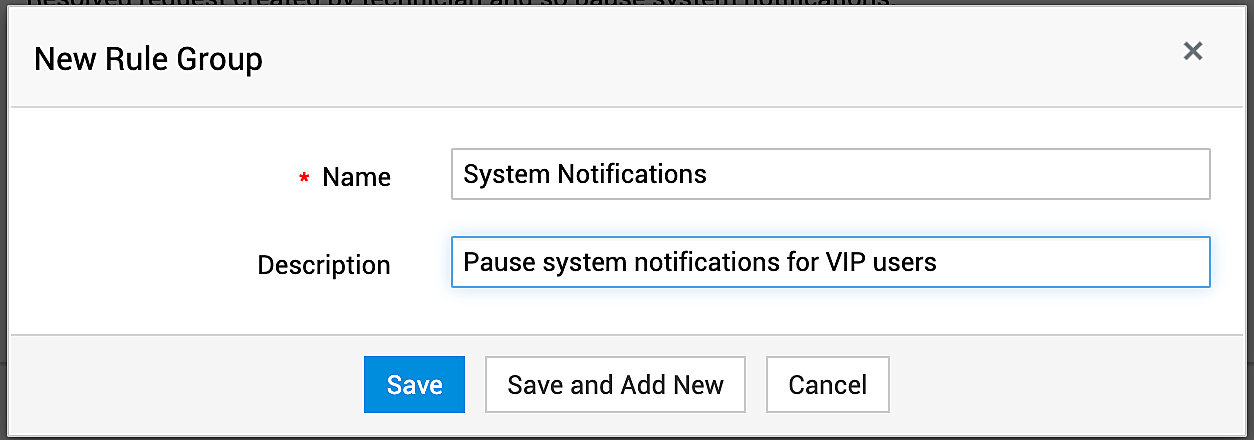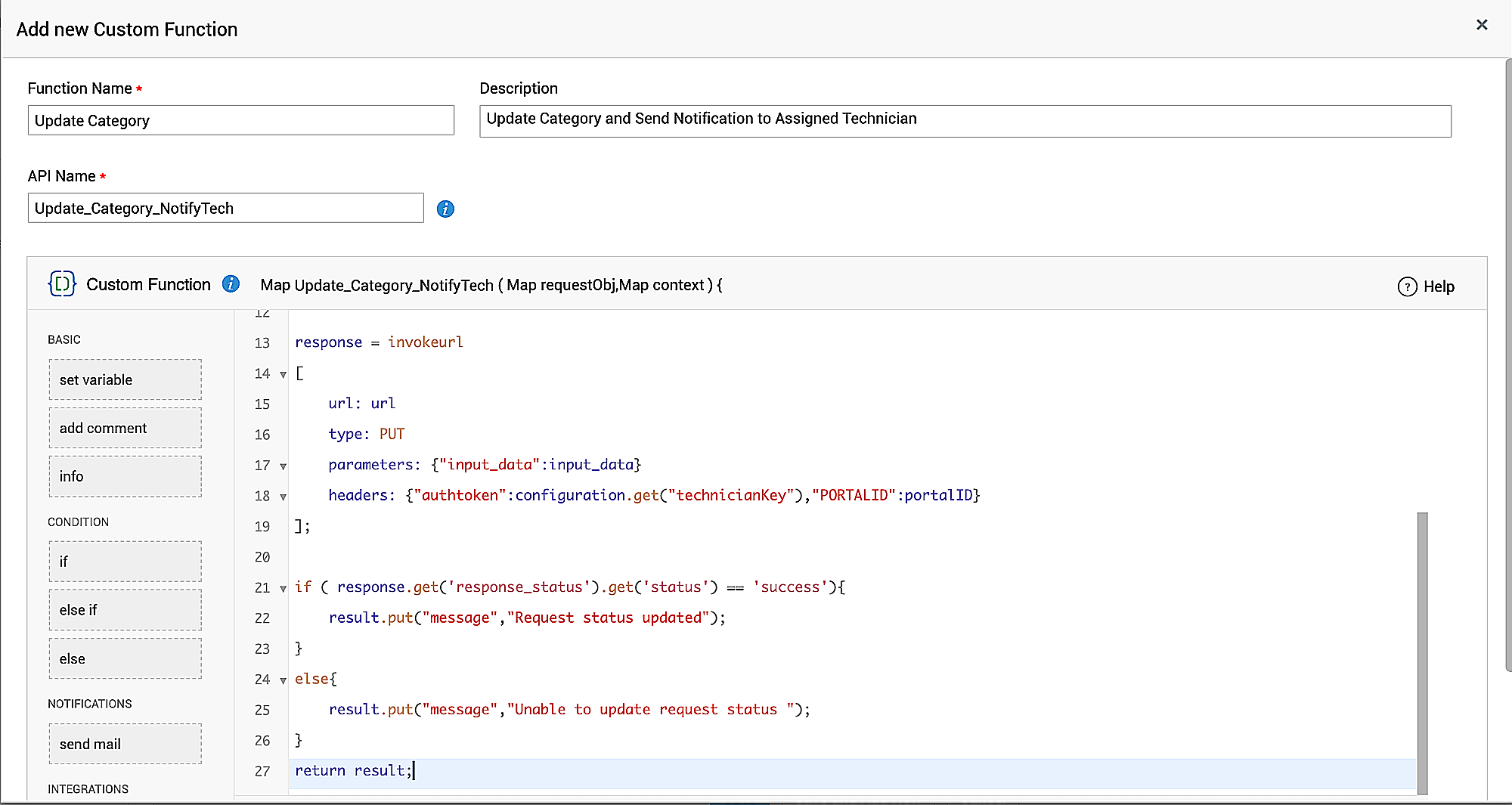Business Rules for Notifications
Business rules are used to automate certain actions for notifications that fulfill certain incoming criteria. Some of the actions that can be automated using business rules for notifications include pausing specific notifications or turning them off for certain users.
Role Required: SDAdmin or HelpDeskConfig
Business rules are categorized and organized under rule groups. You can configure a rule group for all related groups. Rule groups are incredibly useful because you can restrict or apply only specific rules for specific notifications.
To create a new group, click Rule Group. On the displayed page, provide a name and description and click Add.
Configuring a Business Rule
After creating a rule group, create a business rule.
Hover over the rule group and click Add Rule. Fill out the displayed form using the following pointers.

Use the toggle button to enable the business rule. You can disable it when you want to pause its execution later.
|
Fields |
Explanation |
|
Rule name and Description
|
Provide an appropriate rule name, along with a brief and clear note on how the business can be used. |
|
Execute on actions
|
Choose when to execute the rule in the life cycle: Sent by Technician Sent by User Forward Deleted Permanently System Notification If you choose Deleted Permanently and configure Abort process execution as the action, the deleted request will be retained in trash.
|
|
Execute during
|
Choose the rule execution time window: Any Time Within Operational Hours Outside Operational Hours
|
|
Cascade Execution
|
Choose the order of rule execution: Execute next rule Skip remaining rules in this group Skip remaining rules across all groups Cascade execution establishes an order in which the rules are executed. This is helpful when the result of one rule execution is the input for the following rule. Cascade execution can be incredibly useful for contexts that require multiple levels of approvals or the evaluation of various criteria for a specific decision.
|
|
Condition
|
Define the condition for the incoming note. Apply conditions based on criteria Under this selection, you can choose the required criteria from the drop-down list. For each criteria, you can configure up to 10 additional nested criteria-conditions using the AND/OR logical operators. Apply conditions using custom function Under this selection, you can configure your own custom function to define the criteria for incoming requests. Apply no condition Under this selection, the rule will be executed for all incoming notifications.
|
|
|
When you choose Abort process execution, you can add the required error message to be displayed to the user and click Save. When you choose Execute custom action, you can select from the following 3 custom actions, which will be executed when the incoming request fulfills the configured criteria.
|
Executing Custom Actions
Business rules are configured to execute various actions for notes that fulfill specific incoming criteria. In ServiceDesk Plus MSP, you can configure 3 custom actions for your business rules, as follows:
Field Update
This is one of the easiest and simplest of actions that can be accomplished through a business rule. It merely involves modifying the field of an incoming notification.

When you select Override field values the business rule configurations take precedence over the request values. That is, if the request contains some preset values for fields that will be modified if the configured business rule were to be executed, then the business rule values will be overwritten and the original values deleted.
Custom Functions
For actions that cannot be performed out of the box, you can create custom functions by using the application data, along with data from external applications to perform actions required in your environment. Some of the actions that you can use custom function for are creating/closing a request or notes and associate with changes/problems.
The custom functions in ServiceDesk Plus MSP are built on Deluge, Zoho's propriety scripting language. Follow these steps to create a new custom function:
Click Create new custom function
On the displayed page, provide a name and description for your custom action.
Create the custom function through simple drag-and-drop actions on the Deluge Script Editor.
On the left pane, besides the various code snippets, several built-in functions are available for various actions, such as sending mails and notifying stakeholders.
Then, save and test the custom function. If required you can test whether the script is working as expected.

Execute Script
Scripts, like custom functions, are required to perform actions that are not available out of the box. Scripts are created by using the application data, along with data from external applications to perform actions required in your environment.
However, unlike custom functions, you cannot create scripts within the application. You will have to use an external executor file to configure scripts for your specific requirement.
Note: For actions, you can configure either Execute Script or Custom Functions. You cannot configure both these actions together.







